- NGI /
- Projects /
- Case studies /
- Òbidos Atlantic ocean Coastal lagoon, Portugal
Òbidos Atlantic ocean Coastal lagoon, Portugal
The Óbidos lagoon is a shallow coastal ecosystem located in the west of Portugal that is permanently connected to coastal waters characterised by frequent upwelling episodes.
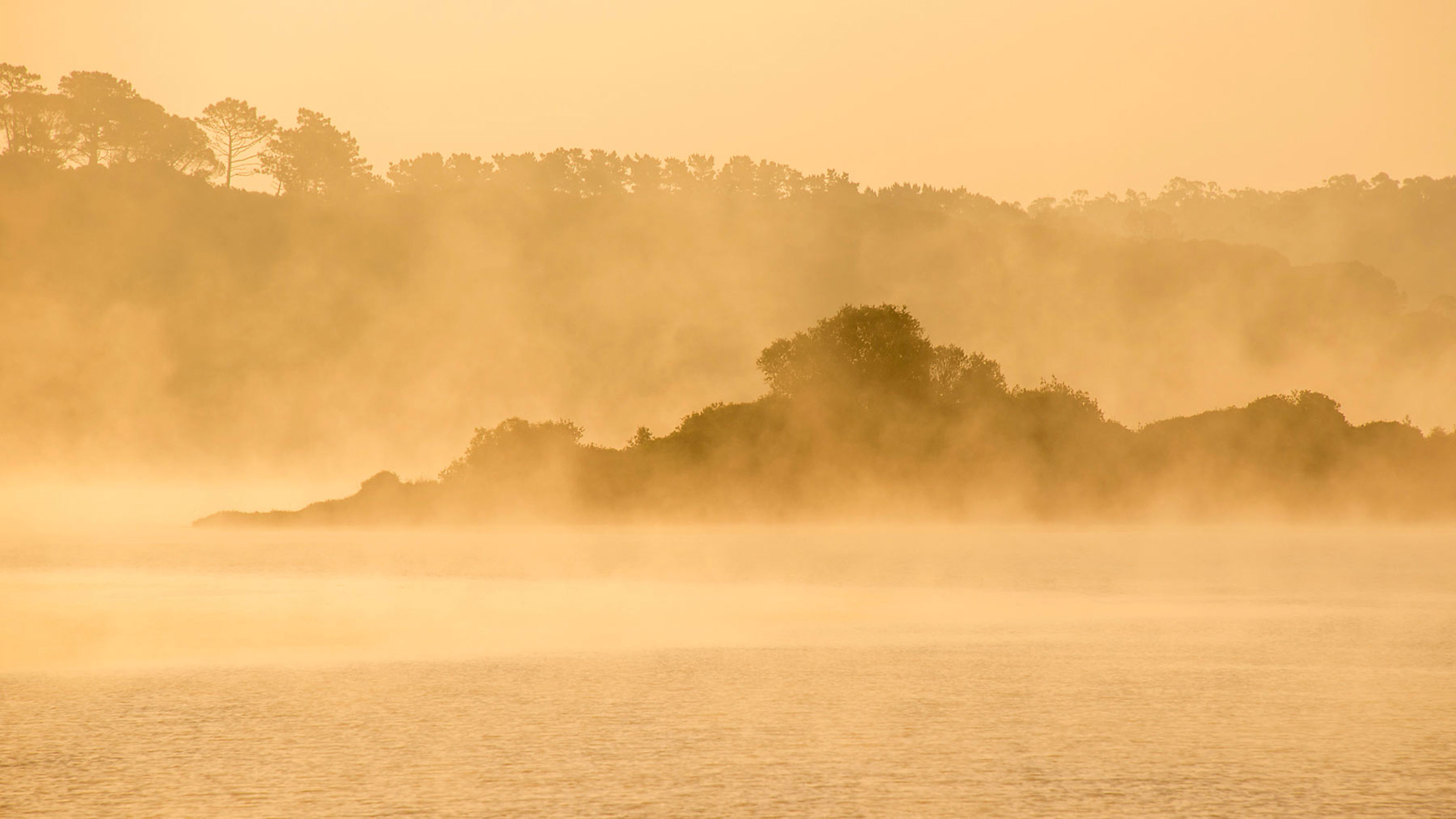
Environmental conditions of the Óbidos lagoon vary spatially due to tidal exchanges with the sea, anthropogenic loads from diffuse sources, and high water residence time in confined areas. In addition, water quality displays a marked seasonal signal in the upper part of the lagoon as result of intense regeneration of nutrients in the sediment. Fishermen community, touristic development and leisure activities benefit from the lagoon wellbeing and its natural resources. Environmental and social-economic factors are therefore critical to the success of an integrated management plan of Óbidos lagoon.
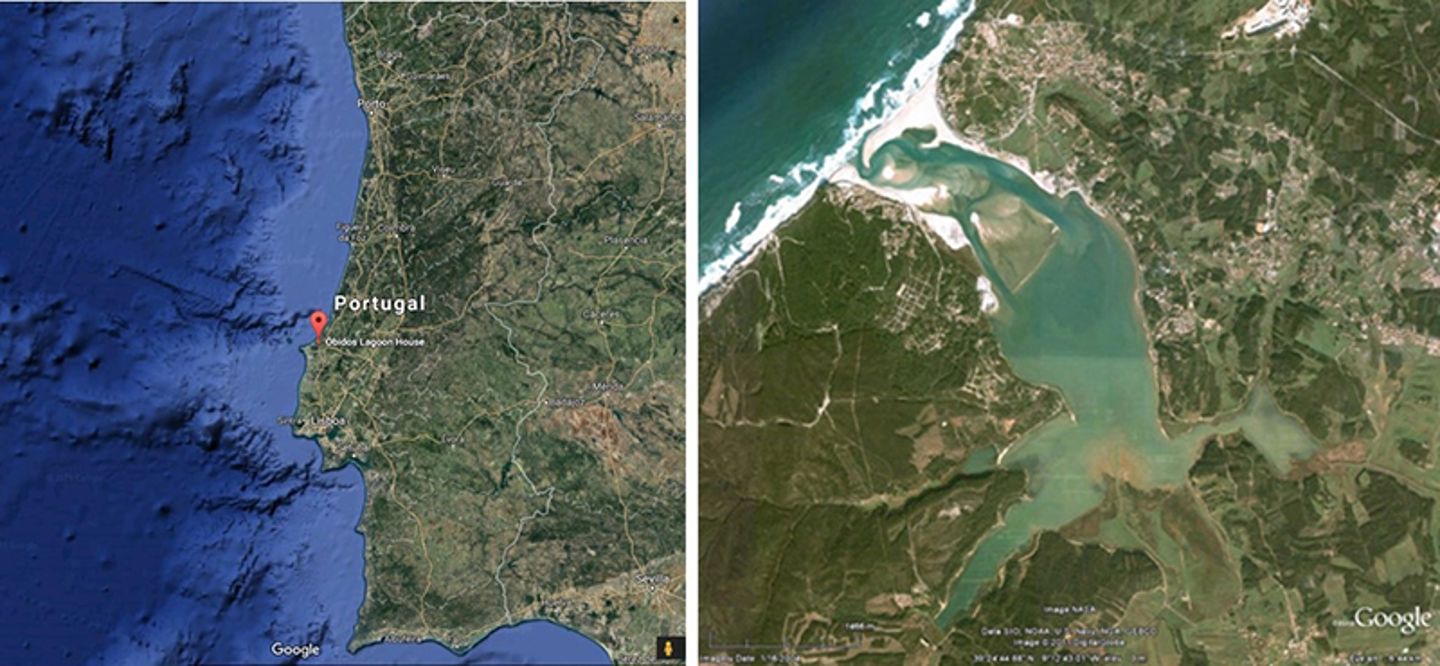
Social communities
The permanent residents of the lagoon region are small farmers, fishermen, municipality employees and service workers living in the countryside or in small villages. The cities Caldas da Rainha and Óbidos, located within a circle of 20 km around the lagoon, constitute the two administrative authorities of the region. In spring and summer, the lagoon is visited by tourists from longer distance, including people searching for beach facilities, leisure and sport activities.
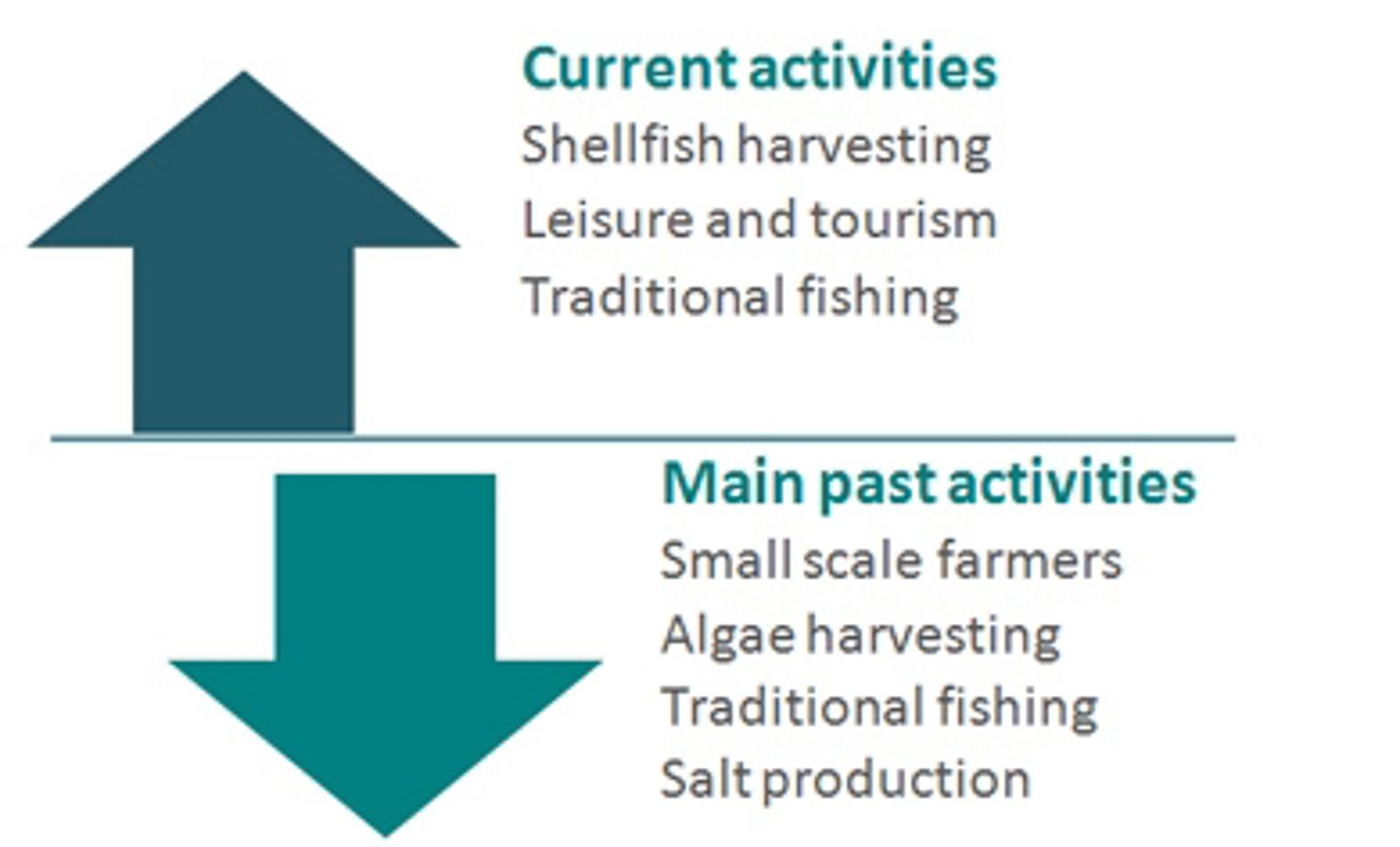
The activities of the lagoon communities have changed considerably in the last decades (see figure on right). Main past activities were agriculture at small-scale farmers, algae harvesting to be used as fertilizers in the fields, traditional fishing, artisanal fish processing, and salt production in ponds at the lagoon margins.
Currently, residents are involved in less activities, namely in shellfish harvesting that reached almost 50% of the fisheries resources, touristic development and urbanization, and leisure activities. Mainly fish species of less commercial value are presently captured, agriculture shifted to kitchen gardening activities using commercial chemicals instead of local organic fertilizers, and salt production was abandoned.
Natural system
The 7 km2 wetland provides nursery for fishes and shellfishes and shelter for birds. The maintenance of these ecosystem services is closely linked to the good environmental status. Water quality is driven by tidal exchanges of water volume with the sea through a narrow inlet channel that crosses the sand barrier. There are reports of changes in the morphology, depth and position of the channel over the past five centuries.
Progressive migration of the channel appears to be associated with the local regime of wind storms and waves. The channel has been repeatedly repositioned by the man intervention to maintain an adequate water exchange with the sea and a saltwater lagoon. The poorer environmental conditions of the upper lagoon are highly influenced by the discharge of freshwater tributaries draining agriculture fields. In addition, sediments that have in the past stored organic matter and historic contaminants release regenerated nutrients and other constituents to water acting as an internal source.
Excess of nutrients leads to an extensive and abundant macroalgal (Ulva spp. and Enteromorpha spp.) cover and a reduction of water oxygenation in summer, which are clear symptoms of eutrophication (see figure below). Recurrent episodes of shellfish poisoning caused by the presence of marine toxins lead the temporary interdiction of shellfish harvesting. The connectivity between the lagoon under nutrient enrichment conditions and the coastal upwelling system may stimulate the increase of toxic algae and consequently enhancing shellfish toxicity with temporary interdiction of shellfish harvesting.
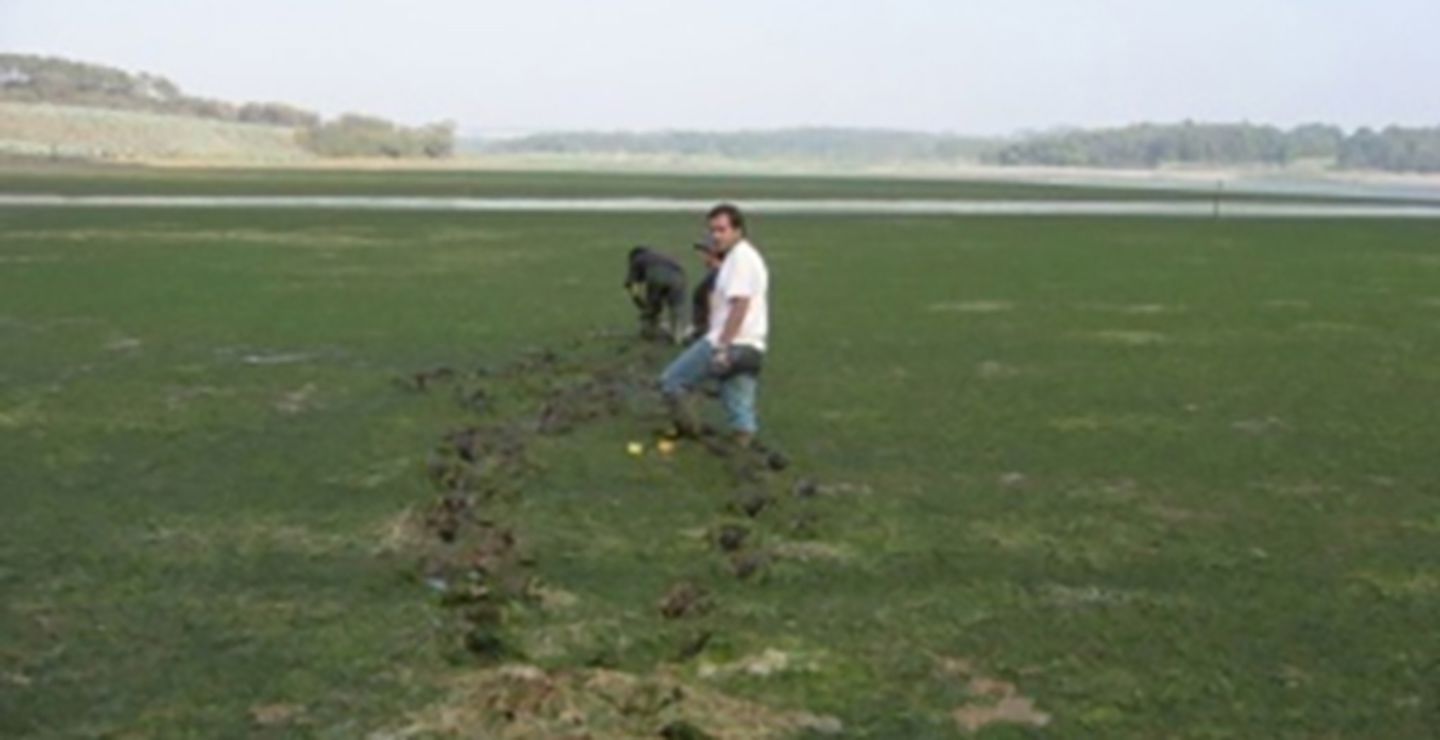
Macroalgal cover in Barrosa branch
Vulnerabilities
Coastal lagoons presenting a substantial and progressive reduction of freshwater discharges, like Óbidos lagoon, tend to loose naturally its permanent connection to the sea and evolve to a close ecosystem. Social structure and human activities have changed over the past hundred years, but man always intervened to maintain the lagoon connected to sea.
This intervention by preventing the natural evolution of the system is the best recognition of its crucial importance to the sustainability of lagoon economy resources. Inlet channel has been over several human generations the most vulnerable point of the lagoon. Can climatic changes reduce the vulnerability of the lagoon? Sea-level rise works in favour of sea-lagoon exchange, but stronger and more frequent sea storms may cause abrupt movement of the inlet channel.
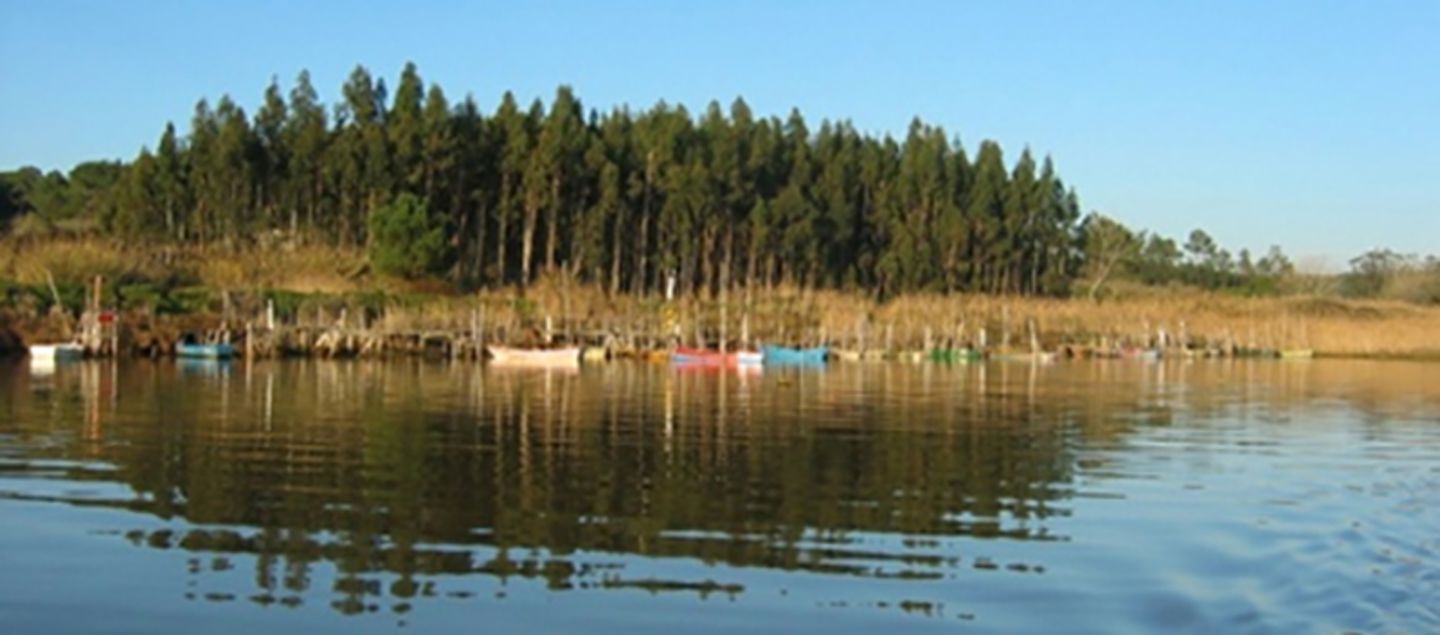
Man intervention will be needed to prevent erosion of the margins and destruction of touristic developments. Episodes of heavy rainfall and runoff lead to the erosion of soil and increase the particle load into the upper branches of the lagoon. If land reclamation will be prevented it may result in the expansion of salt marshes. Its conjugation with higher tidal water volume may improve the nursery and shelter ability of the lagoon with predictable benefits to the fisheries. Óbidos lagoon is presented as example of a coastal ecosystem vulnerable to the variation of natural factors that man was able to manage.
Contacts:
- Carlos Vale, Sub-project manager, cvale@ipimar.pt
- Maria-João Botelho, mjoao@ipimar.pt
- Patricia Pereira, patbio@ipimar.pt